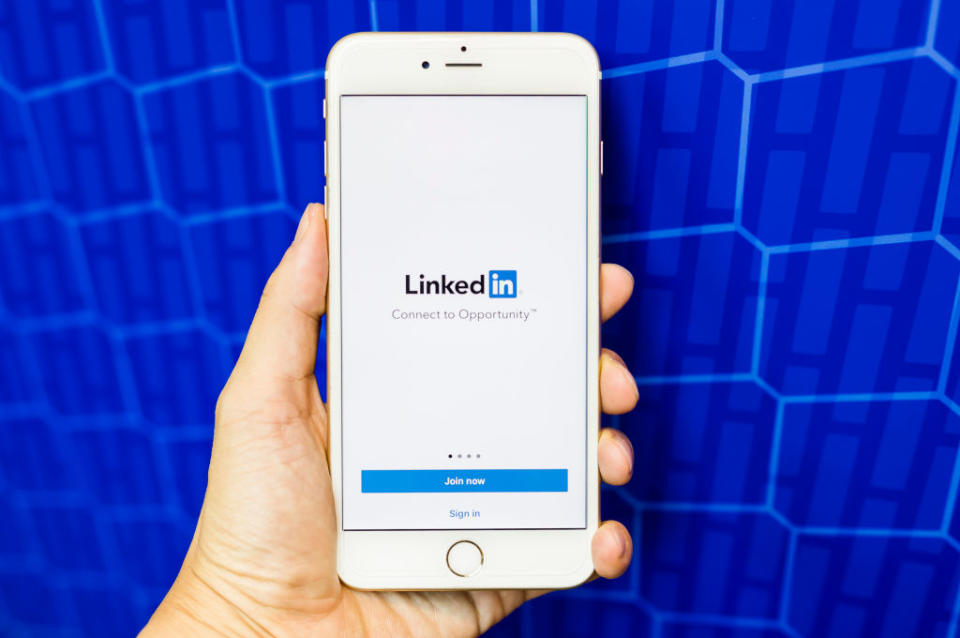Avoid these 4 LinkedIn red flags if you want to get head hunted

Almost 9 million Australians have a LinkedIn profile and the average user spends 17 minutes per month using this powerful networking tool.
Your LinkedIn profile right now is a direct reflection of your resume. The beauty of LinkedIn is that you can do something that has an impact, that is different, that still leverages from the work you have done with your resume, but also positions you in an entirely new way.
Also read: LinkedIn Australia’s careers expert reveals top tips for a killer profile
Also read: How to land that dream job using a simple LinkedIn feature
Also read: How to use LinkedIn to guarantee you get your dream job
Jane Anderson, Australia’s LinkedIn branding expert, says LinkedIn is not an obituary - it’s about positioning.
The strength of LinkedIn, as opposed to a traditional hardcopy resume, is that it is a snapshot that absolutely speaks both to the role that you want, rather than just what you have done in the past.
LinkedIn by design is a search engine. A powerful one.
For its users and its audience, this means that if you mirror your language and your summary with the position that you are going for, the employer will get your profile at the very top of the search results when they begin their online candidate hunt.
Red Flag #1 – Buzz Words
Critical first steps entail research. A common mistake is to use buzz words. LinkedIn says for the past three years, the most overused profile word is “motivated”.
To combat this, print out job advertisements, assess the common language and terminology and then deliberately integrate that language into your LinkedIn summary field and into your experience field to ensure that you are that first search result returned to prospective employers.
Red Flag #2 – No Photo
People are hesitant about the option to upload headshots on LinkedIn and whether it should or shouldn’t be there - the consensus is, it absolutely should be there.
And the data backs this up. Having a professional LinkedIn photo makes your profile 14 times more likely to be viewed.
Casual, social or badly cropped images are not the benchmark for your profile photo. Just as getting the right positioning statement is an imperative within your LinkedIn profile, your photo - your corporate headshot - and the attention to appropriateness that is invested in your choice, should be a mirror to that positioning statement.
Take a look at your photo now: does it reflect the roles that you’re aspiring to obtain? Is it appropriate, and does it place you in the exact right light for the kinds of roles you desire?
Almost all (97 per cent) recruiters are looking at you online before they decide to pick up the phone, so it’s worth spending the time, and the money, to get that corporate headshot right.
Red Flag #3 – No Network
Taking on board these simple tips will now see your profile starting to look solid.
So, what do you do with it? How do you become truly engaged on this network?
You start by actively building your network and your connections.
If you’re currently active in your job search, the recommendations are that you should have at least 300 or more connections. LinkedIn says CEOs have on average, 930 connections.
It is critical that you increase your activity on LinkedIn.
Join groups that are specific to your line of work, read, share and like posts, reach out and connect with colleagues and co-workers, past and present.
There are innovative, selective groups that are as specific as “women in construction” - seek out these groups, start commenting and sharing stories and articles and engaging with other people’s works in the online space.
There is a tiny minority of people on LinkedIn that are writing and sharing blogs.
If you get in that minority it’s a fast track opportunity to broaden your online visibility and build your connections.
The more active you are, the more that it will come up in people’s feeds and the more connections you will accumulate. The momentum, and your network, will build.
Red Flag #4 - Invisible
Kylie Hammond, CEO of Board Portfolio, an Australian organisation that helps senior executives get into board roles, shares that clients of hers won’t even shortlist candidates if they don’t have a LinkedIn profile.
It’s a missed opportunity if you don’t have your profile on point. Make sure to invest the time and attention required to get your LinkedIn profile right, so you are being shortlisted for the role you want.
Kara Atkinson is an Executive Recruitment Expert with 18 years’ experience in helping people continue to build and transform themselves throughout their careers. Visit www.karaatkinson.com for more information.
Make your money work with Yahoo Finance’s daily newsletter. Sign up here and stay on top of the latest money, news and tech news.

 Yahoo Finance
Yahoo Finance 